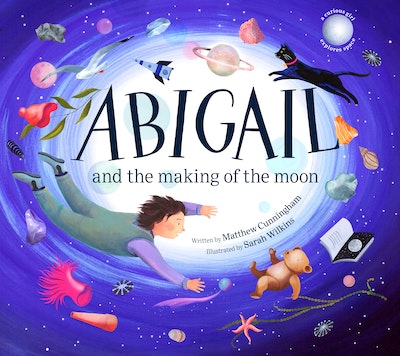- Published: 4 April 2023
- ISBN: 9780143779520
- Imprint: Picture Puffin
- Format: Paperback
- Pages: 32
- RRP: $16.99
Abigail and the Making of the Moon
- Published: 4 April 2023
- ISBN: 9780143779520
- Imprint: Picture Puffin
- Format: Paperback
- Pages: 32
- RRP: $16.99
This is a truly beautiful story, both the text and the vibrant illustrations. The text offers a scientific answer but does so in a gentle personifying and descriptive style that young children will relate to. ...The sense of magic, along with lots of repeated phrases, and gorgeous illustrations really draw the reader in.
Swings and Roundabouts
The key word is wonder, in both story and image. The book begins with Abgail’s big question and it’s not a spoiler to share as it’s on the back of the book: Where did the moon come from? The unfolding origin story of the moon underlines how Matthew is a whizz at conveying information based on science and fact: simply, fluidly, informatively. Yet he manages to offer a poetic way of narrating science. Brilliant! So much to love about this book, but I especially love how big questions can help us see what we are used to seeing a little differently (in this case the moon and Earth).
Paula Green, Poetry Box



